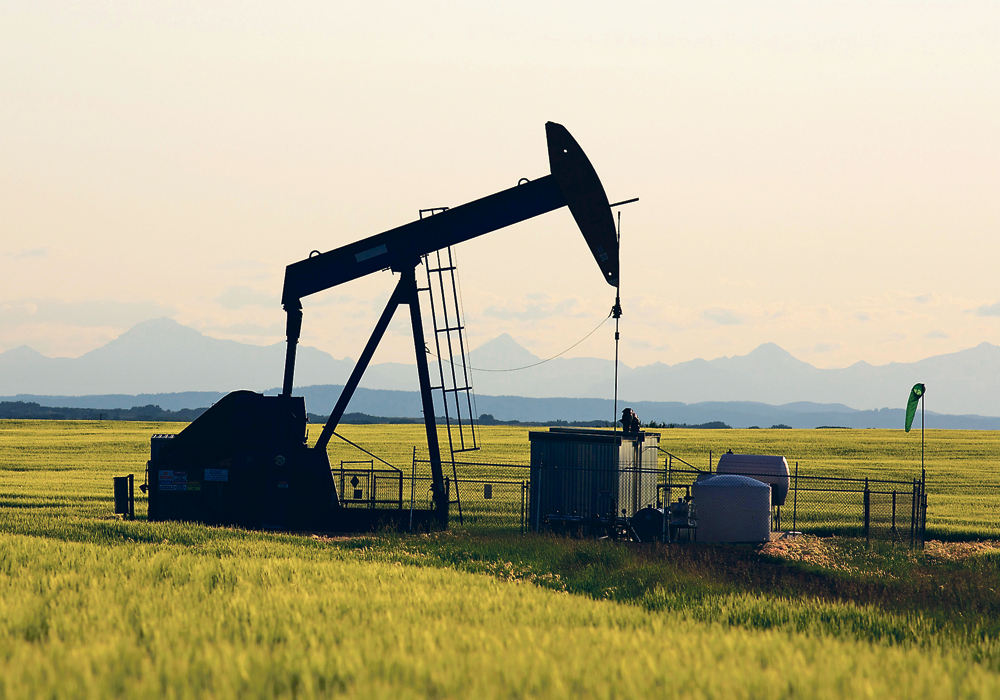A surplus of production capacity looks set to keep crude oil prices mostly steady or perhaps a little lower into 2020, barring any geopolitical surprises or worse than expected global economic performance.
That should provide stability for farmer’s diesel bills, but it also has implications for biofuel prices and the general outlook for commodity pricing.
West Texas Intermediate crude has traded mostly between US$50 and $60 per barrel this year while Brent crude has traded about $10 higher at $60-$70. Prices have been near the bottom of those ranges in recent months.
Read Also

Canadian canola prices hinge on rain forecast
Canola markets took a good hit during the week ending July 11, 2025, on the thought that the Canadian crop will yield well despite dry weather.
Investment bank Goldman Sachs last week forecast Brent prices hovering near $60 a barrel in 2020.
The U.S. Energy Information Administration’s October report forecast Brent falling to $57 by the second quarter of 2020 and then recovering to $62 in the second half of the year.
This comes against a background of continuing production cuts from the Organization of Petroleum Exporting Countries and its partners, a grouping now known at OPEC+, and slowing production growth in the U.S.
However, even with these production limitations, Goldman Sachs and EIA believe there should be ample supply to meet global oil consumption growth, which will likely be modest because of the economic drag caused by ongoing trade tensions between the U.S. and China, other tariff battles launched by the U.S. and uncertainty in Europe linked to Brexit.
The International Monetary Fund forecasts global economic growth this year at only three percent, down from 3.6 percent last year and the slowest since the 2008 financial crisis. It expects a modest recovery to 3.4 percent in 2020.
You might remember that OPEC+ members agreed at the end of 2018 to cut their production by 1.2 million barrels per day to address an oversupply and lift prices. In June, they reviewed the program and decided to extend it to March 2020. Production has also been limited by U.S. sanctions on Iran and government and economic chaos in Venezuela. The September attack on two of Saudi Arabia’s oil facilities further limited production.
The production limits lifted crude prices early this year but for the last few months Brent has struggled to rise above $60.
OPEC is set to meet again in December. Reuters reports that Saudi Arabia is tired of carrying the greatest burden of cuts and wants to ensure that all members are fully complying with their commitments.
Additional cuts might also be an option on the table in December.
One factor affecting the thinking on production cuts is Saudi Arabia’s hope to launch its gigantic oil company, Aramco, onto the public market. The initial prospectus offering was set for Oct. 20 but was pushed back when investors disagreed with the $2 trillion valuation. By comparison, Apple’s valuation is $1 trillion.
The Aramco IPO is a key part of Prince Mohammed bin Salman’s strategy to fund the diversification of the Saudi economy away from simple crude oil production and government-owned industries. Overall, the Saudis would like to see a strong oil price to support the Aramco valuation.
The efforts of OPEC+ to cut supply and lift prices has been frustrated by rising non-OPEC production.
The U.S. now exports almost as much petroleum products as Saudi Arabia and has been contributing to the global production capacity oversupply.
The U.S. production has vastly grown over the past decade thanks to new technology, including fracking and horizontal drilling in shale deposits. U.S. production reached 12 million barrels a day this year, double from less than six million in 2012. In the same period, Canada’s oilsands and conventional production rose to about 4.7 million barrels a day from a little more than three million.
However, many analysts believe today’s oil prices are not high enough to generate profits or the investment required for drilling needed to maintain North American production, particularly in the U.S. shale fields where wells deplete faster than conventional wells.
To get all the oil in depleting shale deposits requires drilling more wells closer together, but that can also result in uneconomic wells.
The low oil price and poor access to pipeline capacity have also severely slowed investment in Canada’s oilsands.
Some analysts believe that this slowdown in investment in North American production, which has forced layoffs on both sides of the border and bankruptcies of smaller independent drillers, will eventually lead to production shortfalls and a turnaround toward rising oil prices.
Goldman Sachs says that turning point might come in about a year.
At that point OPEC+ will have to make a decision about whether to let the price climb or to end its voluntary production cuts.

















